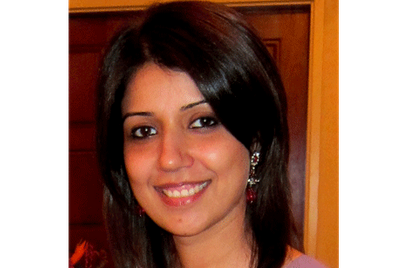.gif&h=570&w=855&q=100&v=20250320&c=1)
While a shift from a media planner’s job to one on the media side is pretty commonplace and logical in our industry, the interesting bit about Keertan Adyanthaya’s move to Channel [V] in 2002 is that one gets to ask him how he feels about the integrated agency structure of the 1990s. Adyanthaya had stints in media planning and buying from 1995 for seven years at agencies like Euro RSCG, Ogilvy and Mindshare, and says, “For any brand to develop an effective communication strategy, you need to understand media and then develop the creative. While the current procedure of having different creative and media agencies is highly financially-efficient, sometimes, you may not get the most impactful campaign. That used to happen much more in the older days.”
Adyanthaya joined as the head of content and communications at Channel [V], and then moved to Star News to relaunch it in Hindi as brand director. He then chose to go to Viacom to launch VH1 in India in 2005. “The pressure on most channels is to generate numbers and viewership. But there are still untapped audiences looking for niche content, and that is the kind of audience we were trying to find at VH1 – the English music-loving audience,” says Adyanthaya. “For almost a year, we didn’t accept any advertising on the channel, because the advertisers would want an absurd rate due to our small viewership – while that was true, we were very clear that the audience had a lot of buying power, and the channel provided access to that. In year two, we only took on four minutes of advertising, and we were very selective about the brands we took on as well.”
Adyanthaya returned to Star in 2007 to manage Star Plus, and then moved in 2010 as managing director, NGC Network India and Fox International Channels. He says, “My mandate was to make a formidable network of channels for FIC (Fox International Channels). This meant that I had to staff up key positions that were lying vacant, invigorate and challenge the team, commission local productions and intensify local language versioning in order to make the channels relevant to audiences, come up with refreshed marketing and communication strategies and launch the other channels in our portfolio.” Some of the highlights of the time he has been there are: launching the channels in multiple languages – Telugu, Bengali and Tamil; 60 hours of local production on Fox Traveller and 10 hours on NGC; Nat Geo Wild being available on all digital platforms; Baby TV, NG Adventure and NG Music being on key platforms like Dish TV, Videocon, Reliance and Sun; and the relaunches of Fox Traveller and NGC.
Asked further about the revamping of NGC and Fox Traveller, Adyanthaya says, “NGC has been around since the last 10 years and has always been a channel that you go to for learning, to expand your worldview, and to satisfy your curiosity. We do not believe in spurious, artificially constructed reality shows in a quest for rating gains. That’s where our new positioning emanates from – ‘This is who we are’. The shows that we choose to air on the channel reflect this philosophy and this is resonating with our audiences and has resulted in NGC beating all competition and leading the infotainment category.” On Fox Traveller, the challenge was quite different. “We looked at the lifestyle space and saw that the channels in the space were focusing mostly on luxury travel – of the kind that hoity-toity South Mumbai or South Delhi types would do. The existing channels just did not reflect the kind of travel that the young middle class Indian would like to do. We also did some focus group studies and figured out that Indians today are tired of sight-seeing holidays. When they travel, they want to get under the skin of a place and not just look at landmarks there. And thus was born Fox Traveller, with a positioning statement of ‘This
Journey Is Fun’. Audiences loved the channel from the word go and joined us for our journey. In fact, FIC is looking at launching this channel in several other
countries,” says the managing director.
Asked about opportunities in the infotainment genre, Adyanthaya explains that branded content (shows like Skoda Yeti The Right Of Way) contributes almost 90 per cent of their revenues. He elaborates, “There are numerous opportunities in the branded content space for channels like ours. I think a great example of how a branded content show should be created is The Dewarists. The branding is so subtle, yet all-pervasive. One of the biggest challenges in this space is for advertisers to think like content creators and for content creators to don the advertiser hat. It’s only when this happens that a win-win solution can get created.” Similarly, the sky is the limit for local productions. “We have a sizeable English-speaking population and if we create quality content, audiences will watch,” says Adyanthaya. “But the sensibilities between regional language TV and English language TV will need to be very different, a case in point being English news versus Hindi news.”
The focus at the moment, in fact, is regional language audiences. “As time goes by, technology is making a lot of things cheaper. Earlier, you needed one transponder per channel; today we have 20 channels per transponder. That’s why we have about 500 channels available in India today. Earlier we could also provide only one language per channel, now with multiple stereo options available, we can provide multiple language feeds. In the immediate future, we’re trying to dub our shows in the colloquial language, and not just textbook language. In our case, especially NGC, we can’t customise content, because the international shows are shot for the world – we localise the show through language and make it relevant for the audience. What we’re looking at, far into the future, is international channels possibly being available in every possible language spoken in India.”
The highlights
On living in Gurgaon: Mumbai is definitely the media capital, but Gurgaon has its own charms. It offers a much better quality of life, allows you more time with your family, which in turns invigorates you and allows your mind to come up with fresh new ideas. I would absolutely recommend that more companies think about relocating out of Mumbai. The benefits to both company and employee are immense.
Hobbies: Motor biking
If not in media, I’d be a: Travel guide
What’s in the fridge all the time: Diet Coke and beer
Mantra: Putting all my heart in everything I do


.jpg&h=334&w=500&q=100&v=20250320&c=1)
.jpg&h=334&w=500&q=100&v=20250320&c=1)
.jpg&h=334&w=500&q=100&v=20250320&c=1)
.jpg&h=334&w=500&q=100&v=20250320&c=1)
.jpg&h=334&w=500&q=100&v=20250320&c=1)
.jpg&h=334&w=500&q=100&v=20250320&c=1)
.jpg&h=334&w=500&q=100&v=20250320&c=1)
.jpg&h=334&w=500&q=100&v=20250320&c=1)
.jpg&h=334&w=500&q=100&v=20250320&c=1)
+(1).png&h=334&w=500&q=100&v=20250320&c=1)





.jpg&h=268&w=401&q=100&v=20250320&c=1)

.jpg&h=268&w=401&q=100&v=20250320&c=1)
